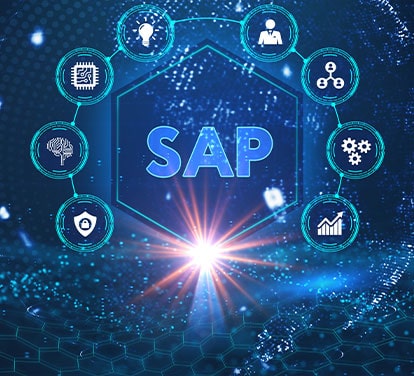Supply chain analytics can help remediate a “distressed” supply chain.
This blog will explore how organizations can build an integrated supply chain with the Boomi AtomSphere platform and the Snowflake cloud data platform, and we’ll do that in five steps.
Step 1: Breaking the Data Barriers with Application and Data Integration
If digital transformation efforts, failed and successful, have taught us anything, getting a handle on where all your data resides is no simple matter. And when you’re dealing with supply chain data produced by hundreds or even thousands of partners, the challenge is immense. It creates a data barrier to an integrated supply chain.
That’s where the Boomi platform’s ability to connect anything to anywhere through application and data integration plays an important role. Application and data integration make trusted data readily available and structured for analysis, which is one of the keys to a healthier, high-performing supply chain.
Step 2: Gather and Transform Supply Chain Data
The Boomi platform can collect supply chain data from wherever it lives, in applications like CRM or ERP, or generated from B2B integrations via EDI, transforms it, and pushes it to the Snowflake cloud data platform.
Because the Boomi platform is data format agnostic, it can understand the many formats found across a global supply chain such as unstructured data, semi-structured data like JSON or XML, and structured data, as well as the EDI X12 format and the NCSA Common log format for weblogs. It can also handle the significant data formats generated by IoT sensors and applications, which include text, binary, XML, CSV, JSON, and RFID. Further, Boomi can keep track of individual supply chain partners' personal data format needs.
You'll be faced with manual data extraction without a way to connect systems, gather their data automatically, or transform it when necessary. The fundamental problems of scenarios that are not integrated and the data silos they create will remain.
Step 3: B2B Integration Through EDI is the Way Forward
There will come a time, and it’s not too far away, when your business is not EDI enabled, your opportunities to function as a supply chain partner will drastically shrink. EDI integration helps organizations connect their supply chain partners and automate transactions and provides visibility across a global supply chain. Hence, partners understand real-time customer demand, raw material availability, finished goods inventory levels, delivery schedules, invoicing, and payment status, etc.
Each amount of manual effort must be balanced with this visibility. In addition, EDI can help businesses onboard new supply chain partners much more quickly and efficiently. The more complex and multi-tiered your supply chain, the more essential it is that partners are EDI-enabled. Can you imagine a company like Walmart sending faxes and emails back and forth to manage its supply chain?
The Boomi platform is fully EDI-capable. Boomi’s low-code development allows companies to quickly setup and manage B2B integrations, onboard partners, and integrate EDI with their existing processes and legacy applications. The platform’s EDI dashboard provides human-readable access to all the relevant underlying data inside correlated EDI documents in processes such as Order-to-Cash. The only path to a truly integrated supply chain is via EDI. It’s a competitive advantage and will eventually become a requirement for marketplace survival.
Step 4: Data Quality is a Must For Great Analytics
Any endeavor that produces copious data usually produces data that needs curation such as cleansing, transforming, and deduplication, and an active supply chain certainly does. Data that has yet to be curated is unsuitable for analytics because it may contain errors and inaccuracies.
For example, customer details will exist in multiple systems across a supply chain and organizations need to understand which version of the information is correct. For example, are Suzanne L. Morgan; Morgan, Suzanne; and Morgan, Sue L the same person? A validated record with name, address, and contact details should exist for every customer and be synchronized across all systems in the supply chain.
The agile, cloud-native capabilities of Boomi Master Data Hub, part of the Boomi AtomSphere platform, make it possible for data stewards to model, match, synchronize, cleanse, and enrich data across the supply chain, regardless of data volumes. With Master Data Hub, organizations can ensure their data is accurate, complete, and up to date. Master Data Hub employs a centralized hub architecture that all contributing systems can use. It provides real-time validation, enrichment, and data matching across all connected systems.
The benefits here are two-fold. First, suppliers can trust that the data they’re sending and receiving is timely and accurate. Second, with Master Data Hub, data pushed to Snowflake is immediately available for descriptive and predictive analytics.
Step 5: Use Boomi Flow to Automate Supply Chain Workflows
In a supply chain, every transaction has a workflow, and every workflow presents an opportunity for automation and its attendant benefits. Whether it’s onboarding a new partner, approving a payment, verifying inventory levels, generating a purchase order, or dozens of other tasks, workflow automation saves time, money, and headaches.
Flow, Boomi’s low-code workflow automation service, empowers partner organizations to digitize and automate manual processes, removing needless time and complexity from everyday interactions. With Flow, partners can:
- Visually build workflows that include tasks, data access, and automated actions
- Create simple approval processes or complex cross-organizational work streams such as transactions involving multiple tiers of suppliers
- Simplify management by tracking activities, events, and errors during the execution of workflows
- Easily integrate workflows with popular cloud applications or use the Boomi connector for advanced integrations
The Supply Chain of the Future is Integrated
In fact, in many industries, that future is now. To integrate their supply chains, organizations need to:
- Identify, collect, cleanse, and transform their data
- Quickly get onboard the EDI bandwagon
- Automate, automate, automate!
With an integrated supply chain, businesses can create a great customer experience that is engaging and reliable across all channels. The Boomi AtomSphere platform, trusted by thousands of global customers for its speed, ease of use, and lower total cost of ownership, can simplify and streamline the journey to an integrated supply chain. And with accurate, up-to-date supply chain data in Snowflake, the power to manage your supply integrated chain via analytics is in your hands.













